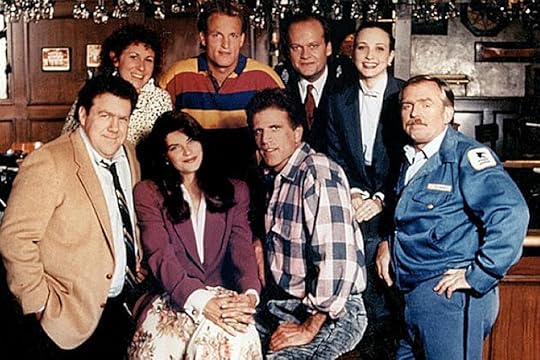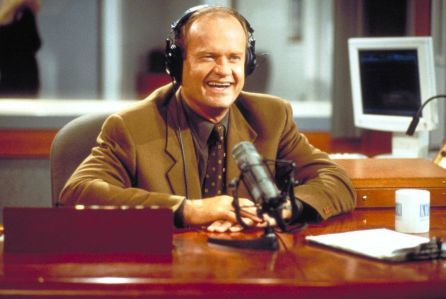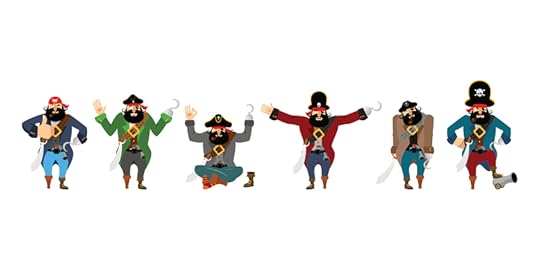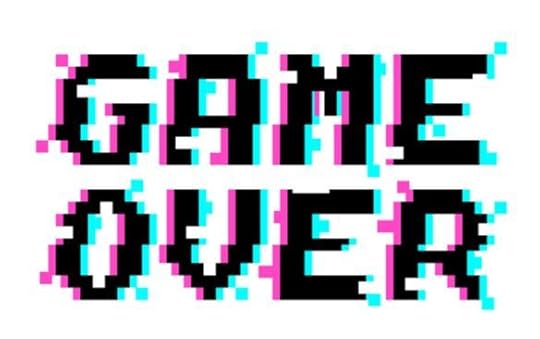Bathroom Readers' Institute's Blog, page 34
October 4, 2018
The No-Cry Onion Goggles…And Other Miracle Food Prep Devices

When the microwave was first released in the late ‘70s, people thought that was a silly kitchen gadget, so who knows? Maybe over time people will swear by these things, too.
Bear Paws Meat Shredder Claws
You could shred meat or make a pork roast into pulled pork with the gentle use of a fork or two. Or you could buy these handheld thingies—slip your hands into the handles and let the sharp plastic claws do their thing.
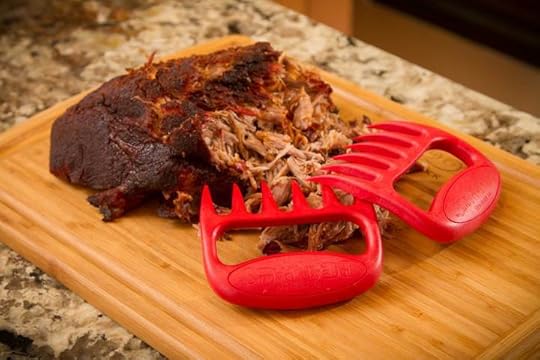
The Dipr
Do you get milk on your fingers when you dip a cookie in milk? You don’t? Well, then you wouldn’t need the Dipr, marketed as the “Ultimate Cookie Spoon.” A plastic stick with a little holder on the end, it’s designed specifically to cleanly dip Oreos into a glass of milk.
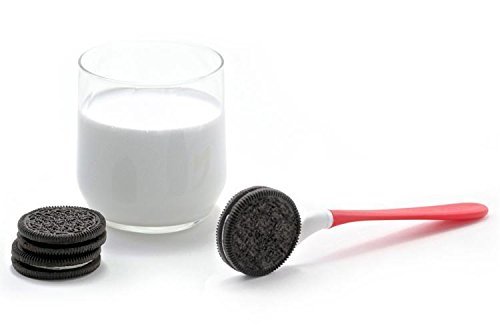
Tearless Kitchen Onion Goggles
What’s the worst part of cutting onions? When the strong onion fumes make your eyes water, of course. Well, quit “crying” and grab a pair of these stylish eye protectors. They look like safety goggles, but they’ve got a foam seal that prevents any onion air from seeping into your peepers.
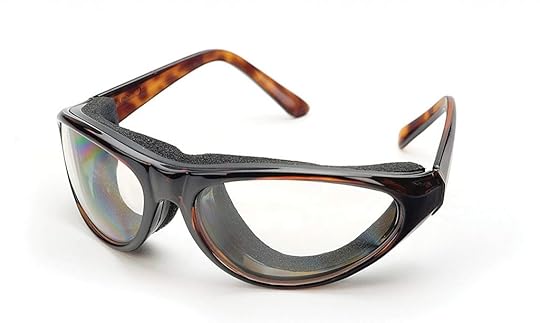
Microwave Egg Boiler
Hard-boiling an egg is one of the easiest kitchen tasks there is—place egg in water, make it boil, wait 10 minutes, done. This takes out all that hard work—place the eggs in the plastic chamber, place in microwave, and cook for just a little bit less time than it would take to boil those eggs on a stove.
Tuna Press
You know how when you open a can of water-packed tuna, and you push down on the just-removed metal lid on top of the fish over the sink to drain the water out? This is a piece of plastic that does the exact same thing.

Kitchen Maestro Pizza Scissors
Instead of using a pizza cutter and a spatula to cut and serve a slice of pizza, respectively, this all-in-one gadget is a pair of strong scissors attached to a spatula-like hunk of flat material. Simply cut into the pizza and lift it off of the pan when you’re done, all in one fell swoop.
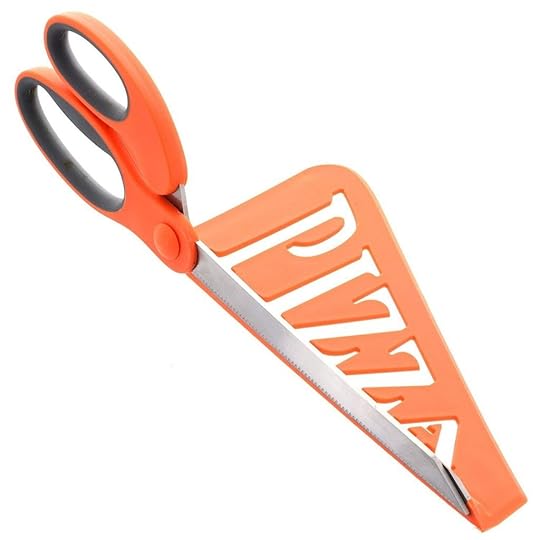
Just Crunch Anti-Soggy Cereal Bowl
If you let cereal stay in milk for more than 10 minutes, it all turns into a soggy mess. Well, you could eat that cereal at a more reasonable pace, or you could buy this plastic bowl. It’s got two individual areas: one for cereal, and one for milk. Users are supposed to slowly add the milk to the cereal at their own speed.

Hot Shot Hot Water Dispense
It’s kind of like those single-serving coffee cup makers that have been the rage over the last few years. But this one doesn’t take “coffee pods”—it delivers a cup of instant hot water at the push of a button for use in tea bags, instant ramen, etc. (However, all those coffee pod makers can already dispense clean, instant, hot water. And so can a kettle.)
The post The No-Cry Onion Goggles…And Other Miracle Food Prep Devices appeared first on Trivia Books and Facts | Uncle John's Bathroom Reader.
October 3, 2018
Hurt By Fruit

Apples, oranges, melons, and berries—they’re sweet, delicious, nutritious…and extremely dangerous, apparently. Here are some weird news stories about people who sustained some nasty injuries courtesy of nature’s candy.
Bad Breadfruit
In December 2017, a Salt Lake City woman named Valerie Zaugg took a vacation to Hawaii, home to an exotic piece of produce called the breadfruit. As Zaugg was sitting onboard a tour bus after coming out of the Polynesian Cultural Center, an unripe breadfruit, roughly the size of a baseball suddenly came flying through the closed window. Glass scattered everywhere, and the breadfruit slammed into Zaugg’s face. “I stood up and I just felt the blood rush down my face,” Surveillance video from a nearby building showed some teenagers running away from the scene of the crime, but police never caught the culprits.
Bad Watermelon
Henry Walker was shopping in an Alabama Wal-Mart one day in 2015 when he came across a huge display of watermelons for sale, displayed on a pallet. He reached to put one in his cart, but instead the watermelons came loose, spilled off, and knocked down Walker. He fell, and his foot got stuck underneath the watermelon-covered pallet. Walker sued Wal-Mart for what he said was a dangerous display…and a jury awarded him $7.5 million.
Bad Avocados
It may not be sweet, but avocado is a fruit. It’s also enjoying a big moment—avocado toasts are a popular brunch item from coast-to-coast, and it’s the chief ingredient in guacamole, a perennial favorite. Avocados sales are up, which also means that avocado injuries are up, especially “avocado hand.” People apparently use dull knives, or too-sharp knives, and have such a hard time working through the tough-skinned, pitted fruit that their hand slips and they slice themselves, rather than the avocado. In the U.K., where a few thousand cases of “avocado hand” have been reported in the last few years, a surgeons group wants the government to place warning stickers on the fruit instructing people how to cut them properly.
The post Hurt By Fruit appeared first on Trivia Books and Facts | Uncle John's Bathroom Reader.
October 2, 2018
Classic TV Shows That Barely Survived Their First Year
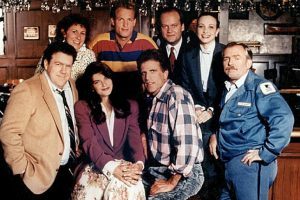
Here are some shows that ran for many years and became part of TV history. And to think, they were almost canceled right away.
Cheers
It frequently makes lists of the best TV shows of all time, it won the Emmy Award for Best Comedy Series four times, and it made stars out of Ted Danson, Shelley Long, Woody Harrelson, and Kelsey Grammer. But in its first year—1982-83—Cheers was almost canceled. It finished its rookie season ranked #74 out of 77 shows, in part because it ran opposite CBS’s monster hit Simon & Simon, and because sitcoms weren’t in vogue. But NBC entertainment president Brandon Tartikoff liked the show, and it surprisingly earned multiple Emmy nominations in 1983. That boosted summer rerun ratings, and NBC kept it on the air…for 10 more years.
WKRP in Cincinnati
An ensemble comedy about a low-rated radio station, infused with rock n’ roll music, and rock n’ roll-inspired slang, and personalities, was a breath of fresh air on TV in 1978, but initially few people watched the show upon its debut. CBS scheduled it against ABC’s hit Welcome Back, Kotter and NBC’s Little House on the Prairie. Viewership was so low, CBS took it off the schedule after eight episodes, but received great reviews and scores of viewer mail, particularly from real-life disc jockeys who liked seeing their profession portrayed on TV. So, after a few months gone, WKRP was living on the air in Cincinnati once again, where it became a top 30 show and ran until 1982.
It’s Always Sunny in Philadelphia
What’s the longest running original comedy in cable TV history? FX’s It’s Always Sunny in Philadelphia. Conceived as an extremely dark take on Seinfeld—in which a core group of bar-owning misanthropes learn nothing from their hilarious adventures each week, it’s set to air its 14th season in 2018. Stars Rob McElhenney, Glenn Howerton, and Charlie Day developed the show themselves as a vehicle to act in when they were underemployed as young performers, and FX put it on the air after liking a homemade pilot episode shot for under $100. Still, the first season of six episodes got such bad ratings that FX told them the cast It’s Always Sunny was through…unless they added a “big name” to boost ratings. An executive was friends with Danny DeVito, who agreed to join the show because his kids were fans.
Baywatch
How could a show about swimsuit-clad lifeguards running in slow motion—starring David Hasselhoff and Pamela Anderson—not be popular? Well, when it debuted on NBC in 1989, it finished near the bottom of the ratings. The network canceled it for that reason, and also because GTG, the studio that made it, went out of business. Creators, along with star David Hasselhoff, shopped the show around to other studios, and it was renewed as a show syndicated to individual stations. It went on to become the most popular show in the world, and ran for more than 200 episodes.
The post Classic TV Shows That Barely Survived Their First Year appeared first on Trivia Books and Facts | Uncle John's Bathroom Reader.
October 1, 2018
1-800-FUN-FACTS

For fun facts and interesting stories, just dial 1-800-UNCLE-JOHN. Actually, don’t, because that’s not a functional number, and everybody does everything over the internet these days instead of the phone. For example, here’s a toll-free look at the history of 1-800 numbers.
Automated collect calling
Back in 1967, American telephone companies introduced a new system to alleviate the workload for the nation’s taxed telephone operators. And by “companies” we mean “company”—AT&T, also known as “Ma Bell” or simply “The Phone Company,” because, as the originators of telephony in the United States, they maintained a monopoly on all phone stuff in America. The work-relieving idea: “automated collect calling.”
The history
In the 1960s, and up until the early 2000s when cell phone became relatively inexpensive and widespread, collect calling was far more common. Making a phone call, particularly a long distance phone call, was very expensive back in the day, and calling another party “collect” shifted the payment from you to them. The hitch: The person on the other end had to authorize the call, and the charge on their phone bill in a few weeks. Automated collect calling eliminated the need for an operator—call a specially set-up number with an 800 prefix (instead of an area code) and the person or party on the other automatically got charged and they were okay with it (because they set up the number in the first place).
Great for business
On an individual American level, these “toll-free” weren’t widely adopted — after all, what regular joe would get a new phone number just so they could get charged for every call? Businesses, however, loved it. The first companies to apply for 1-800 numbers (which firms called “toll-free” to be palatable to customers) were hotel and car rental chains. It was a nice courtesy for customers to be able to call a company to complain, say, and not get a bill for it.
800-starting numbers, all used up
Those 1-800-prefixed numbers were very expensive, however, and because AT&T had a monopoly, it could charge whatever it wanted. After the federal government split up the company in 1984, which encouraged the creation of multiple new phone companies and regional carriers, that created competition in the marketplace, which drove down the price of 1-800 numbers nationwide. That led to explosive growth for the prefix, and it became standard for big companies to offer a toll-free number. The idea was so popular that by 1996, all the 800-starting numbers were used up. Phone companies soon set aside 888, and then 877 and 866 by 2000. Since the turn of the new millennia, 855 and 844 became the prefix of choice.
The post 1-800-FUN-FACTS appeared first on Trivia Books and Facts | Uncle John's Bathroom Reader.
September 27, 2018
Great Book, Let’s Ban It!

Since 1982, book folk (libraries, publishers, readers) have celebrated “Banned Books Week,” setting aside the last week of September to examine literature that’s been “challenged” or banned” around the country. Here are some books removed from shelves…for some very odd reasons.

Are You There God? It’s Me, Margaret
The Judy Blume novel about a girl’s awkward struggle through adolescence is a classic and a cultural touchstone, but one school tried to ban it for being “profane” because it speaks honestly and openly about the title character’s first time menstruating.
Lord of the Flies
A school district tried to remove William Golding’s harrowing novel about boys trying to survive in the wild because it suggested that humans, at their core, are nothing more than animals. (That is kind of the thesis of the novel.)
Harriet the Spy
One library didn’t like how the title character in this enduring kids novel by Louise Fitzhugh uses deception and antisocial behavior to solve mysteries. Or, in other words, how she spies.
My Friend Flicka
There’s a lot of animal terminology in Mary O’Hara’s book about the special bond between a young lady and her horse. At one point, someone refers to a female dog by a word that starts with “b” that is commonly used as a derogatory term for women. Even though the book employs the word in its correct, animal-based usage (and not its vulgar slang use), some libraries and schools have still pulled it off the shelves.
Zen Buddhism: Selected Writings
A town in Michigan banned this book — which lays out the fundamentals of the Buddhist religion so that readers may decide if it’s a religion they might like to pursue — in 1987 because it “detailed the teachings of…Buddhism in such a way that the reader could very likely embrace its teachings and choose this as his religion.”
The Stupids Die
Harry Allard’s The Stupids books are a series of children’s titles about a family named the Stupids who are, well, stupid. A jurisdiction in Michigan tried to ban The Stupids Die in 1998 because leaders were worried kids might read it and then think it’s okay to call someone “stupid.”
1984
George Orwell’s landmark future-dystopian novel was challenged in Jackson County, Florida, in 1981 for a purported pro-Communist slant. Ironically, when it was published in the Russian language in the late 1940s, it was banned by the Soviet government for attacking communism.
The post Great Book, Let’s Ban It! appeared first on Trivia Books and Facts | Uncle John's Bathroom Reader.
Who Wants to Play Some…OUYA?

For every PlayStation or Nintendo Wii that sells in the tens of millions and generates billions of dollars, plenty of other video game systems enter the market…and then it’s game over.
OUYA
The OUYA system got to market outside of the system—the creators raised $8.5 million in development cash via crowdfunding website Kickstarter. Units were produced and shipped in 2013—the console was about the size of a baseball and came with a huge controller at a cost of just $99, a fraction of the $400 consoles usually cost. Plus the games, which users had to download, were free. Well, you get what you pay for. It ran on Google’s Android software, which at the time, wasn’t optimized for video games. Users complained that the games moved along incredibly slowly as a result…plus there were only a handful of those free (and as it turned out, generic) games available. About 200,000 OUYA units sold in all, and it was discontinued in 2015.
NOMAD
Today, the name of the game in gaming is “mobile gaming.” Adults play games on their smartphones, while kids play them on their handheld video game devices, like the Nintendo Switch or the Nintendo 3DS. Sega gave the idea a go back in 1995 with its Nomad, when the technology really wasn’t there yet. It was marketed as a portable version of the successful, high-tech Sega Genesis system—users didn’t even need to buy new cartridges, because their Genesis games worked fine in the Nomad. And that was the problem—it was “fine.” The Sega Genesis was nearing the end of its period of dominance, and gamers probably wanted a new system with new games, not a new way to play old games. Also, it cost a lot to use—the Nomad required six AA batteries, which powered the device for a mere two hours.
LASERACTIVE
Some hardcore gamers might own two, three or even more consoles—and cartridges are not interchangeable between them. In 1993, Pioneer thought they could build bridges with a system called the LaserActive. It played games from two different Sega consoles, games from a briefly popular system called the TurboGrafx 16, not to mention karaoke discs, CDs, and laserdiscs. It was a dream come true, but the price was a nightmare: $970, roughly four times the cost of the leading console. Only 10,000 people ponied up for a LaserActive.
VECTREX
Hitting the market in 1982 when Atari was dominating the home video market, the Milton Bradley board game company released this gaming system that was completely unlike anything Atari was doing at the time. For example, while Atari’s 2600 plugged into a user’s TV and displayed crude but recognizable graphical representations of aliens, spaceships, and Pac-Men, the VecTrex utilized vector graphics, basically stark lines (think of the classic video games Asteroids). Nevertheless, a VecTrex cost the same as an Atari did ($200—about $500 in today’s dollars). That cash had to cover manufacturing—the VecTrex didn’t plug into a TV, as it had its own built-in viewing screen. The system didn’t sell well, and the video game market crash of 1983 certainly didn’t help things, and neither did a price drop to $79. The VecTrex was gone by 1984.
The post Who Wants to Play Some…OUYA? appeared first on Trivia Books and Facts | Uncle John's Bathroom Reader.
Hey, That’s Not Frasier!
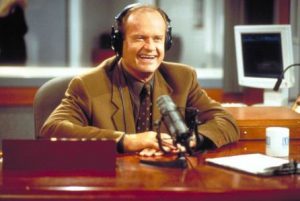
Those TV shows we love, the ones with beloved and familiar characters we welcome into our homes week after week? They could have been a lot different, had creators gone with their original ideas and instincts.
Frasier
Fraiser was a smash hit for NBC, running from 1993 to 2004 and winning the Emmy for Best Comedy Series a record five times. It transplanted the fussy psychologist Frasier Crane (Kelsey Grammer) from Cheers into a new setting, as a radio psychologist in Seattle living with his retired policeman father. That wasn’t even remotely the initial concept. In 1989, Grammar signed a deal with three Cheers producers to make a new show when Cheers finally ended. The quartet was so afraid that the new show would earn unfavorable comparisons to the popular Cheers that they set out to make a brand-new show—Grammar was going to play a paraplegic publisher of a conservative magazine who rarely left his apartment and who was attended to by a sassy nurse. The studio in charge of the show hated the idea, and suggested a Frasier-based spinoff of Cheers instead.
Atlanta
Atlanta is one of the most acclaimed shows on TV today, starring Donald Glover (who also created the show and directs some episodes) as Earn, a young man in Atlanta trying to manage his cousin’s rap career, stay in the good graces of his on-again/off-again girlfriend…and deal with increasingly strange characters and surreal adventures episode after episode. Glover had a vision in mind, but he had to downplay some of the more bizarre aspects to get it onto FX. He pitched it to the network as similar to Community, the wacky college sitcom he starred in for NBC, but with he and Craig Robinson (Darryl from The Office) palling around Atlanta. Glover, who is also a musician under the stage name Childish Gambino, also promised a new song in every episode.
The Big Bang Theory
CBS put The Big Bang Theory on the air in 2007 after creators Bill Prady and Chuck Lorre revised and reshot the pilot CBS rejected a year earlier. While it was always a show about scientists and “the girl next door,” the main characters were fundamentally different. The pathologically relationship-averse and logic-minded Leonard (Jim Parsons) was at first a sex-obsessed guy named “Lenny” who makes donations to fertility clinics. The female lead wasn’t sweet and bubbly Penny (Kaley Cuoco), but a tough as nails woman named Katie invited to live with the scientists. Also, the show didn’t yet have its original theme song by the Barenaked Ladies—it used Thomas Dolby’s 1983 hit “She Blinded Me With Science.”
The post Hey, That’s Not Frasier! appeared first on Trivia Books and Facts | Uncle John's Bathroom Reader.
September 19, 2018
A Pirate By Any Other Name
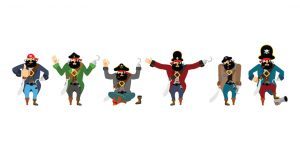
Today is International Talk Like a Pirate Day! Or, should you know of those scourges of the sea by a different name, International Talk Like a Buccaneer Day. There have been lots of different words throughout history synonymous with pirates, and here’s a little bit about their origins. Or rather, arrrrrr-igins.
Buccaneer
Pirates, as the name of a popular ride and movie series tell us, like to rummage about the Caribbean, so it’s interesting that the buccaneer has its origin near the islands. Some of the people who lived there had a word in the local language (Caribbean Arawak): buccan, which referred to a wooden frame on which manatee meat was roasted over a fire. French explorers in the area adopted the word into their language, where it became boucane, which means “to smoke.” From that, English speakers developed boucanier, to refer to French denizens of the islands who used those frames to roast and smoked the meat of wild animals. Since they had to hunt those critters, boucanier came to mean “hunter,” and in American English, the word evolved into buccaneer.
Privateers
These kinds of pirates loot enemy ships on behalf of a government entity. In other words, they’re “private” contractors.
Corsair
A corsair is merely a privateer aligned with the French government (which explains the French-sounding word). These pirates-for-hire worked on behalf of the French crown, boarding and raiding ships they came across that happened to fly the flag of a nation that happened to be at war with France. Corsair ships were officially licensed by the French government, given a legal document called a Lettre de Course. From “course,” of course, is where corsair comes from. It’s derived from the Latin word cursus, and literally means “one who journeys.”
Marauder
Before the major age of piracy in the 1700s and 1800s, some form of marauder had already been a part of the French language for a couple hundred of years. It’s a version of the Middle French term maraud, which means “rogue” or “vagabond”…both of which would describe pirates pretty well, so that definition more or less took over the word.
Pirate
Many (if not most) major European languages derive from a language that linguists call Proto-Indo-European, which dates to about 4500 B.C. One term from that system that made its way into numerous tongues was perya, which means “to attack.” It evolved into Greek as peirates, which means “a person who attacks ship,” and into Latin as pirata, meaning the same thing. The Spanish and Italian word for a ship assailant was also pirata, so it was a quick jump over to English as pirate.
The post appeared first on Trivia Books and Facts | Uncle John's Bathroom Reader.
September 17, 2018
How Some Cheeses (And Cheese-Like Products) Got Their Names
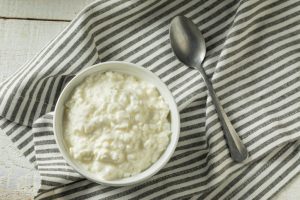
A lot of cheeses are named after their points of origin—Cheddar, Roquefort, and Colby are named after places in England, France, and Wisconsin, respectively. Other cheese names are a bit more complicated.
Cottage Cheese
It’s the most familiar and commonly consumed form of cheese curds (at least in the United States). What are curds? Coagulated chunks of milk proteins that came together due to the addition or presence of an acid, such as rennet (which naturally occurs in sheep stomachs) or vinegar. Curd based cheeses date back to ancient times, but cottage cheese as we know it, in name and form, originates in 1830s England, when dairy farmers made curd cheese in their homes, or cottages, with dairy waste left over from making other products elsewhere on the farm, such as butter.
Monterey Jack
This mild, semi-hard white cheese is only partially named after its birthplace. In the mid-19th century, Franciscan friars stationed in central coastal California (near the settlement of Monterey) created the bland cousin of Cheddar. That’s when Scottish immigrant and entrepreneur David Jack entered the picture. He came to California in the 1840s to work as a military contractor (among other things) and got so rich that he bought up most of the land in Monterey County, including the dairies who were by that time producing the friars’ Monterey cheese. He decided to nationally market the cheese with his own name attached, first as Jack’s Cheese, and then the classier sounding Monterey Jack.
Mozzarella
Mozzarella is as Italian as the thing to which it most often contributes: pizza. In the Neapolitan dialect (as in from Naples, where pizza has a rich history) of Italian, mozza means “to cut.” That reflects how mozzarella is made. Cheesemakers mozza, or rather cut, curds and shape them into balls, which is how traditional mozzarella is sold.
Cheez Whiz
This shelf-stable (before opening) cheese-like brick is a famous example of processed cheese. When it was first mass-marketed, Kraft named the melty, queso necessity “Velveeta” to imply that it was smooth and silky…just like velvet. (But with a far more pronounced cheesy taste.)
The post appeared first on Trivia Books and Facts | Uncle John's Bathroom Reader.
Huge Video Game Flops
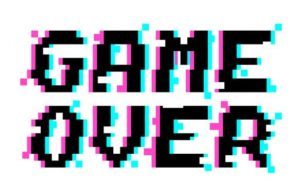
Not every video game can thrill gamers and sell millions. Here are some titles that hit the “Game Over” screen entirely too quickly.
Pac-Man
How can the most famous and popular video games of all time land on a list of flops? Because of the limitations of technology in 1982. In the very early 1980s, Pac-Man became one of the first widely successful video games, generating billions for Namco as people around the world kept plugging quarters into arcade consoles to control the little yellow pie-shaped creature as it traversed a maze, ate white pellets, and avoided ghosts. Atari, the leader in home gaming consoles at the time with its Atari 2600, paid millions for the rights to “port” the game to its product. What should have been a sure thing was a disaster: Atari’s Pac-Man looked nothing like the iconic, arcade Pac-Man game play. The ghosts were different shapes and colors, and instead of white dots, Pac-Man ate little brown dashes. Seven million people bought a copy of Pac-Man for their Atari (because some Pac-Man is better than no Pac-Man), but Atari foolishly produced 12 million cartridges, thinking the attraction of Pac-Man would create five million new customers. The company had to destroy five million cartridges, the financial loss of which directly lead to Atari’s bankruptcy in 1983.
Duke Nukem Forever
The first three Duke Nukem computer games, released in the 1990s, played like cheesy ‘90s action movies: The title character sported dyed and cropped blonde hair and fought enemies with names like Dr. Proton. The fourth game in the series, Duke Nukem Forever, was announced in 1997 for a release the following year, along with a massive advertising campaign. And then things got delayed…and delayed…and delayed. Production of the game jumped between four different publishers. It wasn’t released until 2011—13 years late—at which point the premise was hokey and dated and gamers had moved onto many more things. Even worse: Video game magazines called Duke Nukem Forever one of the worst games of the year. Even worse than that: the game lost as much as $30 million.
Guitar Hero Live
The Guitar Hero series was one of the bestselling video game brands in the early 2000s. Games came packed with a plastic guitar that was used as a joystick—gamers pressed colored buttons that corresponded to action on the screen, enabling them to “play” along with famous rock songs. More than 25 million copies of various Guitar Hero games were sold, making it the third bestselling video game franchise ever, after Nintendo’s Mario games and Madden NFL. The Guitar Hero fad naturally petered out in 2010, and millions threw their plastic guitars into the back of their closets. In 2015, Activision revived the series with Guitar Hero Live. It was like the old games, but more technologically advanced—players could strum their fake guitar from the point of view of a musician in a live rock concert, or connect to and play along with an online library of music videos. But Guitar Hero’s time had come and gone—less than 700,000 people bought a copy of the reboot, and in 2018 Activision quietly closed down the online network.
Tony Hawk: Shred
What kid (or adult or that matter) wouldn’t want to enjoy what it feels like to skateboard like the legendary Tony Hawk? Apparently, quite a few. Tony Hawk: Shred required players to guy a “peripheral” to play—a wireless fake skateboard that the gamer stood and twisted on to control their virtual skateboarder. Reportedly, the skateboard didn’t properly or accurately translate a player’s motions to the screen, resulting in awkward and jerky game play. But it’s not as if many people even realized that—despite bearing Tony Hawk’s name, the game sold 3,000 copies the first week it was on sale in 2010
The post Huge Video Game Flops appeared first on Trivia Books and Facts | Uncle John's Bathroom Reader.


